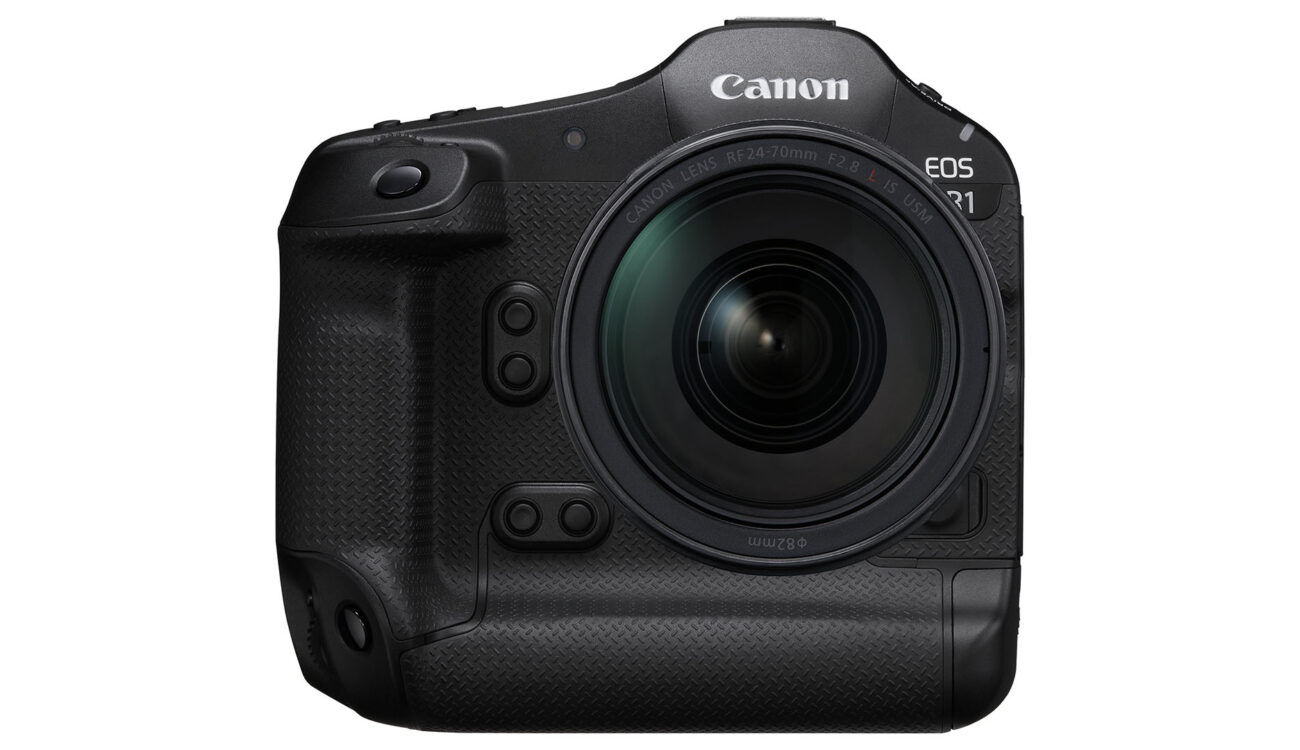
Canon EOS R1 announced a new flagship for the hybrid age. Canon’s brand new EOS R1 represents the pinnacle of Canon’s hybrid prowess. Its long feature list includes 6K 60P RAW video recording, 4K, 120P, 4 Channel 24-bit audio, C-log2 and C-log3 color space, XF-AVC-S and XF-HEVC-S, Cinema EOS file structure, simultaneous stills shooting while recording video, and even a tally lamp. It also boasts an overhauled DualPixel intelligent AF system, an 8.5-stop in-body image stabilizer, and a new level of AI in-camera integration (only for stills at the moment). The EOS R1 is more than a spec sheet. Canon graced the camera with all their advanced controls and professional ergonomics. All are encased in an extremely durable chassis, ready for the harshest of environments and conditions. These features make for Canon’s first mirrorless flagship and, in some ways – the company’s first hybrid flagship.
If you are looking for the announcement article of the EOS R5 Mark II, click here!
Canon’s entrance into Mirrorless was a hesitant one. The Japanese giant first dipped their toes into the enthusiast’s segment with the EOS R, slowly making its way up into professional cameras. The newly announced EOS-R1 completes the range as the EOS-R professional keystone. At the EOS-R1’s core, we’ll find a 24mp BSI stacked sensor and Canon’s newest X-Processor. This duo enables a plethora of new features. These include extremely fast sensor readout, improved DualPixel AF capabilities, Advanced Video recording options, containers and frame rates, seamless stills-video operation, and more. Let’s dive in.
Upgraded video features
The EOS R1 is fast. Canon’s new flagship utilizes a new sensor and processing pipeline to achieve impressive speeds, from readout to frame rate. The new stacked BSI CMOS should provide a 40% reduction in readout speed compared with the (already fast) EOS-R3. This should reduce the rolling shutter effect to negligible levels. The camera provides various recording options. 12-bit RAW video will go up to 6K 60P, recorded in camera. The camera also supports C-log2 and C-log3 color space, XF-AVC-S and XF-HEVC-S, and Cinema EOS file structure for easier integration into filmmaking sets. There’s also an in-camera proxy recording to the second card and, for the first time for a non-Cinema Canon EOS (drum roll…), an HDMI type A in all its massive size and professional robustness.
Canon R5 C Ultimate Video Manual
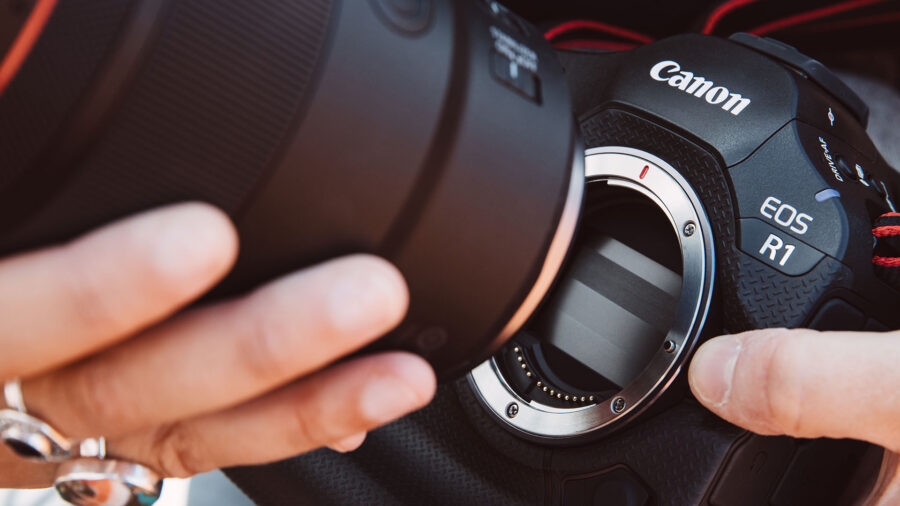
Build and ergonomics
Canon’s EOS-1 series’ durability has gained somewhat of a legendary status over the years. Built to the highest standards, aimed for the most demanding scenarios, EOS 1s went to the toughest locations and came back to tell. Though we haven’t had the chance to hold the EOS R1 yet, it seems to follow this path. Extensive gaskets and o-rings seal the magnesium-alloy body from every direction. Canon went with a new texture for the EOS R1 grips. As with most flagship stills-hybrid cameras, the EOS R1 uses an integrated vertical grip with a large battery inside. A wealth of buttons and switches should make the EOS R1’s operation fast and precise. The camera uses Canon’s eye-controlled AF system debuted with the EOS R3. Improved with more eye sensors, the system now sits atop a 9.44 million-dot EVF unit to help you aim the focus area while maintaining the target in sight. The standard AF-ON button gets a nice renovation with a two-stage operation for additional functionality.
DualPixel Intelligent AF – the next generation
Canon’s DualPixel AF system was arguably the first usable live-view autofocus on the market. I remember the first time I got my hands on the Canon EOS 70D with its shockingly sticky focus tracking. It looked like it could never miss a shot. Much has improved since then, and with the EOS R1, Canon takes another step forward. Unlike any other DualPixel implementation, this system is dubbed “Cross Type.” Another DSLR-era term – this means the system can detect both horizontal and vertical lines upon which it builds its depth perception. Add this to the constant flow of sensor information and heavyweight processing power and we’ll get an impressive prospect, on paper at least.
A new level of in-camera AI functionality
The Canon EOS R1 will use Canon’s powerful DiGiC X processor. While powerful in its own right, this flagship adds the newly introduced DiGiC accelerator alongside deep learning algorithms. The new accelerator combined with the DiGiC X would crunch the exorbitant amounts of data provided by the fast sensor. But they’ll do much more.
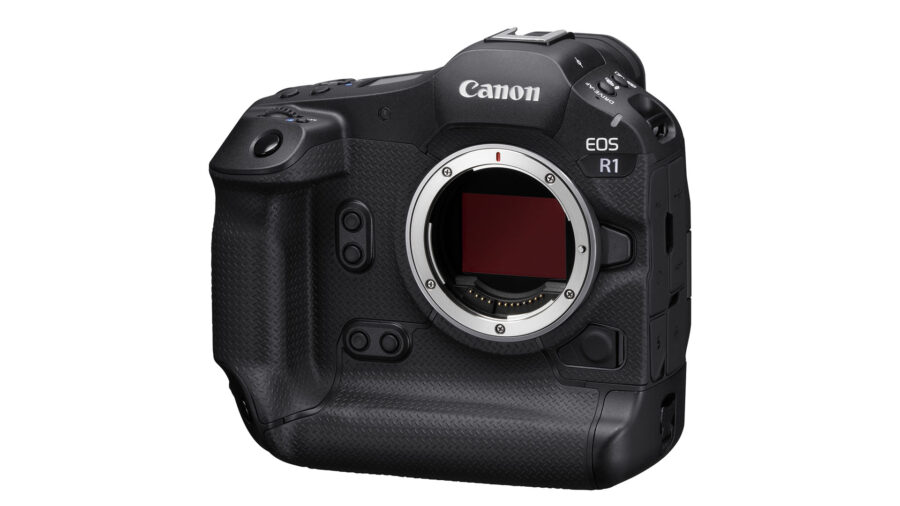
The EOS R1 features a new level of in-camera AI integration. The usual suspect is the newly announced DualPixel intelligent AF system, the latest generation to Canon’s revolutionary live view AF patent. Its new “Action Prority” mode can now detect specific sports, such as basketball, soccer, or volleyball, and adapt to their respective pace and positions. The system can also lock on to the face or upper body to improve tracking.
AI upscale and noise reduction
We’ve just recently covered the “first Generative AI camera,” and here comes Canon, integrating the technology into mass-market products (Both the EOS R1 and EOS R5 II). While limited to stills and for in-camera jpeg/HEIF files, it’s the concept that makes these abilities so interesting. Features trickle down. When I started my journey into the world of photography, RAW video wasn’t even a fantasy. Today, it’s available on sub $2K cameras. Imagine the possibilities stemming from this technology. Stronger, more efficient processors may replace expensive sensors, upscaling, and denoising the footage on the go, in-camera. Will we photographers compromise the purity of light captured for this algorithmic abomination? The future will tell.
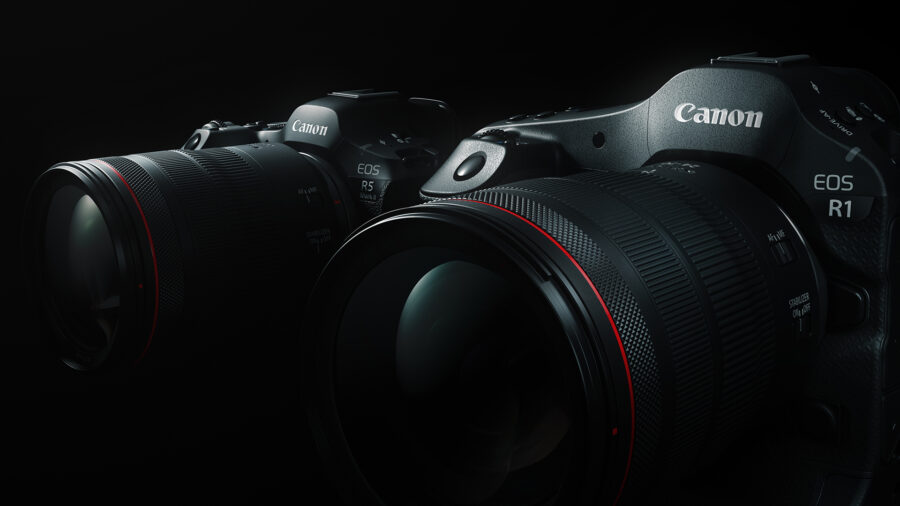
C2PA authenticity format
Canon aligns their professional flagship with the emerging authenticity standard of the C2PA. As this camera will probably fill the hands (and strain the necks) of countless press and documentary photographers, this seems like an impactful choice. Though Sony and Leica implemented the standard earlier, Canon’s market share may prove to be a bit more influential in the implementation of the C2PA as an industry standard

Professional connectivity
As a press workhorse to be, the Canon EOS R1 comes equipped with multiple connectivity options. These include Wi-Fi6E/11ax 6GHz in-body, the fastest of any EOS series camera to date. 2.5Gbps Ethernet connectivity and dual-threaded FTP in the body are also supported, ensuring stable and fast transfer in various workflows.
Still a stills camera?
The EOS-R1 is officially a still-hybrid camera. No “C” monicker granted. However, the most basic spec review will show the camera’s motion capture prowess. After all, motion is no more than fast still capture, so a camera capable of the latter will surely perform excellently with the former. Regarding stills, the EOS-R1 offers the most extreme feature set in the Canon line and is among the best across the market. 40fps at full resolution is impressive in its own right, but the camera doesn’t stop there. The fast readout means negligible rolling shutter effect as well as 1/400 electronic shutter sync speed. The camera will also capture a 20-frame pre-burst, to never miss a beat. Its 9.44 million-dot black-out free EVF should provide impeccable indication while tracking the photographer’s eye to target the AF system on the subject of choice. There are few cameras that can compete with the EOS R1 for both fast action stills and video (but to be fair, none costs as much as Canon’s new flagship).
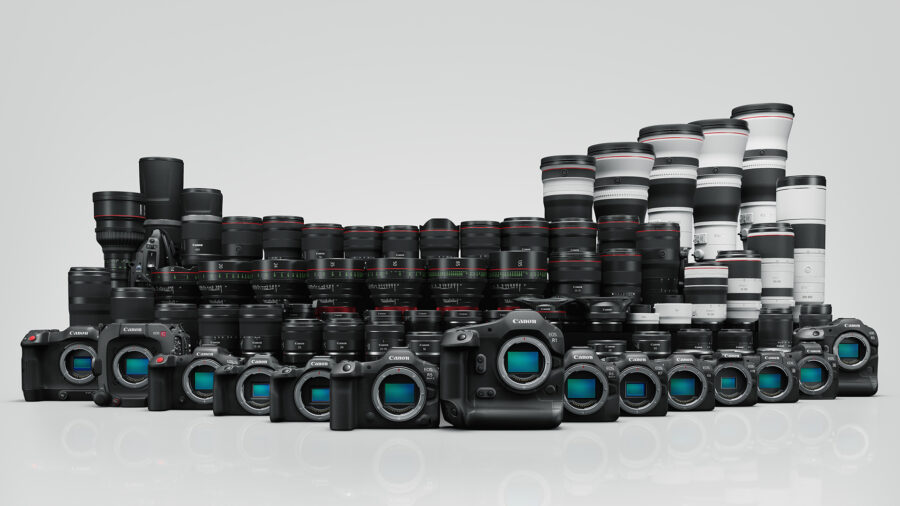
Alternatives
Canon’s new flagship faces some stiff competition both in-house and by competing brands. Sony’s a1 falls a bit short in speed but compensates with a much higher resolution. The global-shutter a9III is a tad faster but lacks significant ergonomic features stemming from Canon’s vast professional experience. Both the a1 and a9III can’t touch the EOS R1’s in-camera video capabilities. The EOS R1 also seems more robust and durable, but time (and usage) will tell. Durability-wise, the Nikon Z9 is probably the closest contender. Canon’s old nemesis may be a bit slower when it comes to stills, but its 45-megapixel sensor offers higher resolution. This translates to 8K video capability with internal N-Raw and other robust formats. Canon’s own EOS R3 also comes very close in most aspects. The EOS R1 has a potential advantage regarding autofocus, but we’ll have to get our hands on it to see if the theoretical benefits of the new DualPixel Intelligent AF translate into noticeably better performance. It also goes the extra mile with build quality, connectivity, and some special features, but all comes with a price: It’s amongst the most expensive 35mm Full Frame cameras on the market.
Playing with the big boys
The EOS R1 price tag puts it in the same segment as another new Canon camera – The Cinema EOS C400. Sure, each is aimed at a different use case, but the similarities do justify a comparison. Though both cost about the same and feature 6K 60P internal RAW recording, the EOS C400 is geared for filmmaking while the EOS R1 leans heavily towards still-hybrid operation. The EOS C400 will provide an internal ND system, while the EOS R1 includes an IBIS. The C400 offers various cine-oriented ports and controls, while the R1 is tough and compact. The final decision, as always, lies with your personal preferences and professional requirements, but it’s an interesting dilemma.
Price and availability
The Canon EOS-R1 will cost $6299. Sales will start around November 2024.
Will you consider the new Canon EOS R1 as a video camera? Can it fulfill your filmmaking needs or will you go for a more traditional Cine option? Let us know in the comments.






























